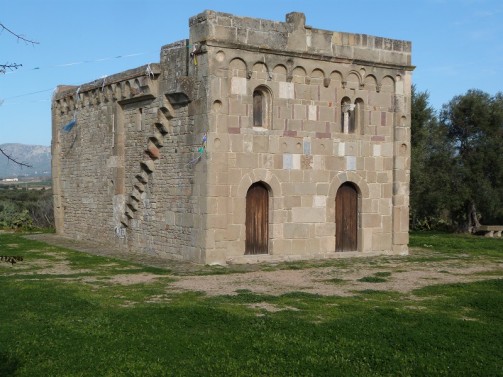The church of Sibiola dedicated to Santa Maria is one of the masterpieces of Romanesque art built in Sardinia by the Vittorini.
The building can be ascribed to the first quarter of the 12th century (c. 1125), although there appears to have been a column stone near the altar engraved with the date 1086, which was later lost in the 1964 restoration.
The layout has two naves with apses perfectly oriented to the east.
The north aisle is slightly narrower than the south aisle and both are barrel-vaulted.
The north side has a hanging staircase for access to the upper floor; these are lithic corbels set into the wall, reminiscent of the internal stairways of nuraghi.
The façade consists of squared ashlars of trachytic stone that create a certain vividness of color; in the past it culminated with a bell gable of which only the basal ashlars remain today, having been destroyed by lightning in 1963, but the bells were already absent because they were apparently stolen in 1800.
In the center of the façade appears a bichromatic radiating circle and at its side can be seen a larger ashlar with an inscription, now worn out by time in which is engraved the expression in nomine Domini et Marie (in the name of the Lord and Mary). On the façade, at either end, are two basins, originally ceramic later carried horizontally even in the upper part finished with an arching that accompanies all sides.
Inside, the two naves present a barrel vault.
As for the furnishings, in the main nave there is a single altar surmounted by a wooden crucifix, while in the minor apse, in a niche, stands the small statue of St. Anne with the infant Mary, found in the surrounding countryside.









